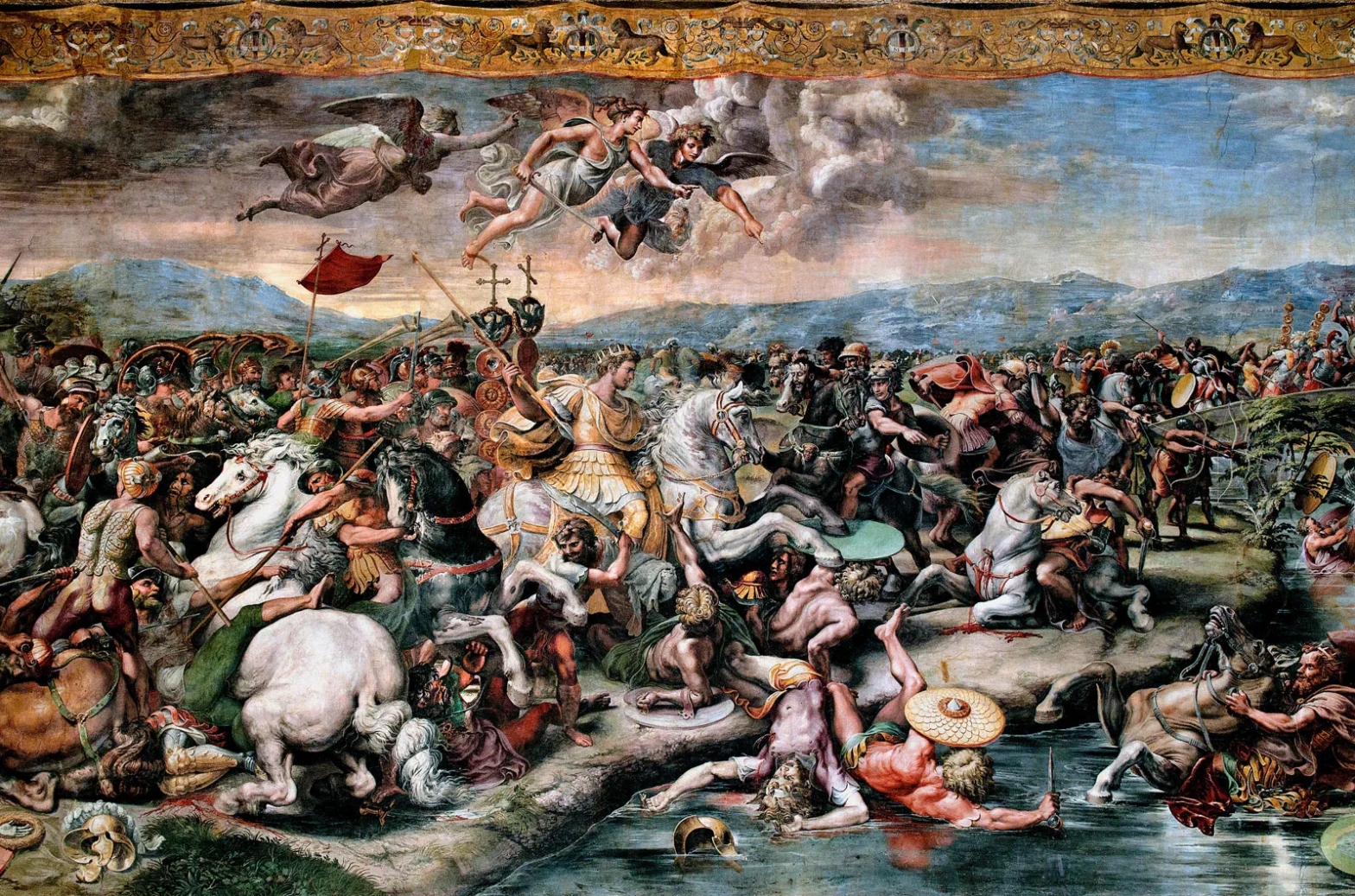Posted by Powee Celdran
“With free minds, all are to worship their Gods.” -Constantine I the Great

Welcome back to the Byzantium Blogger and here we are again with another Byzantine history article! In this one being the sixth part of this series featuring top lists concerning the lives of certain emperors who I think have interesting stories, we will talk about the first Byzantine emperor being no other than Constantine I the Great (r. 306-337).

Now in history, very few rulers have such a great legacy the way the Roman emperor Constantine the Great does especially in his role in shaping the faith of Christianity and turning it into a major world religion and in establishing a city being Constantinople that would be the Roman Empire’s new capital for over a thousand years. Constantine the Great’s role both in legalizing the once underground faith of Christianity and establishing Constantinople as the Roman Empire’s new capital therefore set the foundations for what would be the Byzantine Empire (Eastern Roman Empire), thus in this article we will go over these major achievements of Constantine as well as some others as they too would play a role in the establishment of what would be the Byzantine Empire. Apart from his role in shaping Christianity as seen with his issuing of the Edict of Milan in 313 that legalized Christianity and the Council of Nicaea in 325 that set the official creed of Christianity and in establishing Constantinople as the new imperial capital, Constantine had many other achievements too such as the number of battles he won in order to secure the Roman Empire for himself and the reforms he made which would be long lasting ones and important for the survival of the Roman Empire. While covering 10 of Constantine the Great’s achievements in this article, we will also go over his rather fascinating story of how he inherited a divided Roman Empire which he managed to reunite and stabilize, therefore we will also see why he deserves the title of “the Great”. Before beginning this top 10 list, I will give a quick background to the life of Constantine I the Great and the Roman Empire he grew up in.

Follow me, Byzantine Time Traveller on Social Media:
Instagram: @byzantine_time_traveller
Facebook: Byzantine Time Traveller
Youtube: No Budget Films
Website: Byzantine Time Traveller
Deviantart: Byzantium-blogger55
Art Station: Powee Celdran Porphyrogennetos
Patreon: Byzantine Time Traveller
In the 3rd century AD, the Roman Empire although massive and powerful faced a time of crisis- the Crisis of the 3rd Century- marked by constant civil wars and military rebellions that saw a change of emperor numerous times in only 50 years, plagues, foreign invasions, and separatist movements that at one point the Roman Empire was split into three with two parts being breakaway states: the Gallic Empire in the west and Palmyrene Empire in the east.

The empire was only reunited with these two breakaway states returning to the main empire by Emperor Aurelian (r. 270-275) in whose reign the future emperor Constantine I the Great was born. Constantine was born in Naissus (today’s Nis, Serbia) in 272 to Flavius Constantius Chlorus, an Illyrian military officer serving the emperor Aurelian and Helena, a woman of low birth and Greek origins. The young Constantine barely spent time with his father due to the latter’s military career which brought him up the ranks in the Roman army under the next few emperors in the Crisis of the 3rd century which was put to an end in 284 by Diocletian, another Illyrian army officer and a friend of Constantius who following the disastrous Persian campaign of 283 was proclaimed emperor by the army in Asia Minor on their return trip from Persia. Diocletian (r. 284-305) first of all in 285 named his colleague and fellow Illyrian military officer as well being Maximian as his Caesar or junior co-emperor who in the following year was elevated to the rank of Augustus or senior emperor and thus the empire was divided in half with Diocletian ruling the east from Nicomedia (today’s Izmit, Turkey) and Maximian the west from Mediolanum (today’s Milan, Italy).
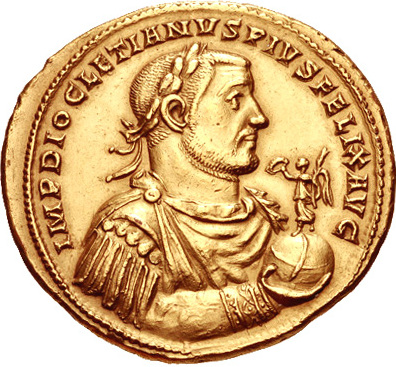
This division of the empire was to make the administration and military for such a massive state to be run much easier and despite there being two emperors, it was still a single empire with Diocletian as the senior one. However, the division of the empire in half soon enough proved to be not as effective and thus in 293, Diocletian further divided the empire this time into 4 parts into what would be known as the Tetrarchy and here as Diocletian and Maximian ruled as co-Augusti, they had additional junior emperors or Caesars under them wherein for Diocletian it was his other fellow army officer Galerius (r. 293-311) who would rule the Balkan provinces of the empire and for Maximian it was Constantine’s father Constantius I (r. 293-306) who would be in charge primarily of Britain and Gaul.

Additionally, as part of Constantius’ service to Diocletian, his son Constantine at a young age was sent to Diocletian’s court in Nicomedia as a hostage to be formally educated in Classical philosophy, statecraft, and military affairs. During his time in Nicomedia, Constantine despite being a Pagan probably began his path towards Christianity by attending the lectures of Lactantius, a Christian scholar in the city, though during this time, Constantine had also taken part in the campaigns of Diocletian and Galerius against the barbarians across the Danube River in 296 and against the Sassanid Persian Empire in the east from 297-299 which thus gave him military experience. Constantine too while in Nicomedia in 303 witnessed the initiation of the Great Persecution of Christians issued by Diocletian and Galerius, though Constantine played no role in it. In 305 meanwhile, Diocletian after 20 years in power decided to abdicate due to illness all while encouraging his co-Augustus Maximian to do the same, thus Constantine’s father Constantius I became the new Augustus in the west and Galerius the new Augustus in the east taking Diocletian’s place as the new senior Augustus. Additionally, two new Caesars were appointed which were Severus II (r. 305-307) who was to be Constantius’ junior emperor and Maximinus Daza (r. 305-313) being the nephew of Galerius who was to serve his uncle. Constantine meanwhile being given no position escaped Galerius’ court and travelled with great speed from Asia Minor to Gaul to serve his father the new Western Augustus in his campaign in Britain.

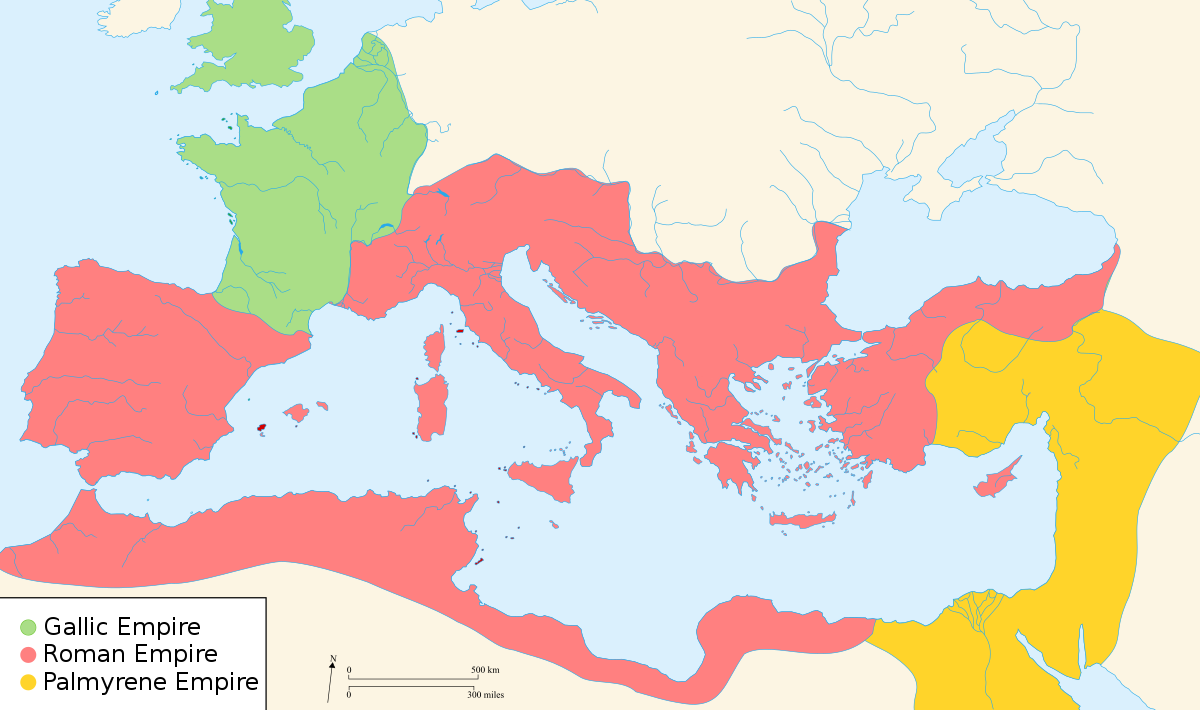
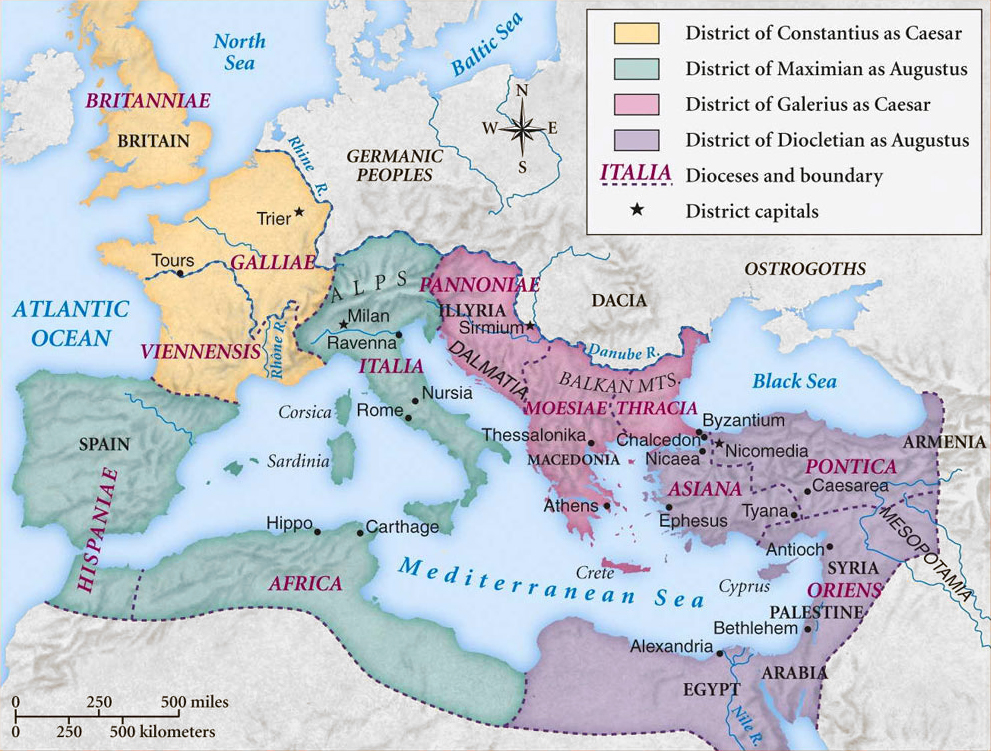

Related Articles from the Byzantium Blogger:
Byzantine Alternate History Chapter I
The Legacy of the Byzantine Empire
7 Times Constantine XI Palaiologos Exemplified Bravery
10 Unknown Facts About Emperor Justinian I
8 Times Michael VIII Palaiologos was an Evil Genius
10 Surprising Facts About Basil II
5 Reasons to Feel Bad for Justinian II and 5 Reasons to Hate Him
I. Constantine I’s Rise to Power

In the summer of 305, once Constantine joined his father Constantius I in Gaul, they crossed the English Channel to Britain by ship and proceeded north to Eboracum (York) which was a major Roman military base.

From 305-306, Constantine and his father campaigned against the Picts beyond Hadrian’s Wall in today’s Scotland but did not achieve much success. In July of 306, Constantius having become severely sick died in York naming his son Constantine as his successor thus the troops with them proclaimed Constantine as Augustus on the spot all while the provincial governors in Britain and Gaul which were under Constantius’ control recognized Constantine as their emperor, though Hispania did not. As the new Augustus in the west, Constantine sent word to his senior Augustus Galerius in the east of his elevation, however when receiving word of it, Galerius was enraged but eventually accepted Constantine not as Augustus but as the new Caesar in the west as true enough the west needed a new Caesar as the role of Augustus was already reserved for Severus II. As the new Caesar in the west, Gaul, Britain, and Hispania were under Constantine’s control wherein following his acclamation in Britain, he travelled to Trier in today’s Germany which he used as his capital like his father before him.
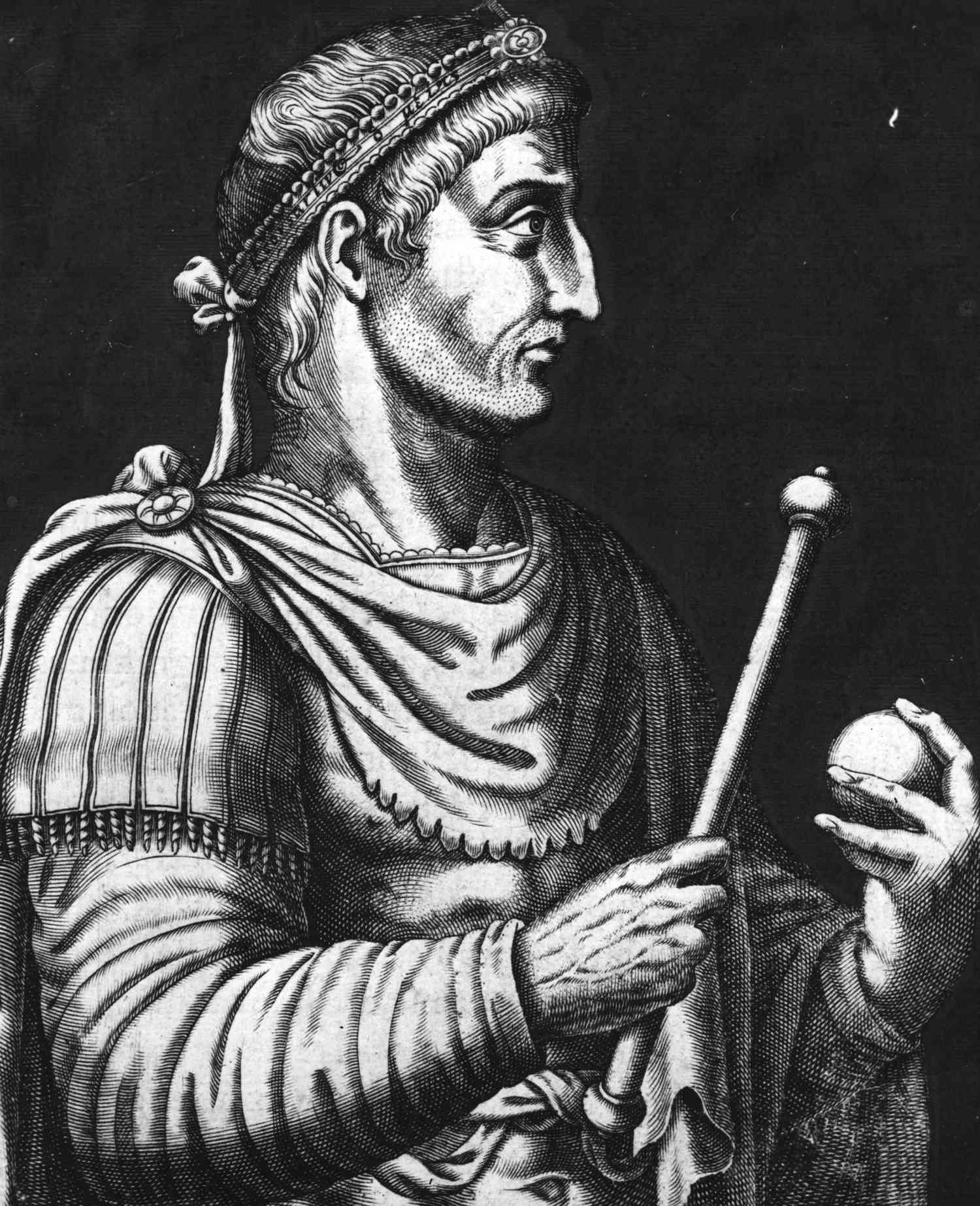
During his stay in Trier, Constantine greatly renovated the city and pursued a policy of tolerating its Christian population unlike Galerius in the east, though during his time in Trier Constantine was away most of the time campaigning against the Franks east of the Rhine River. In the meantime, over in Rome, the former Western Augustus Maximian’s son Maxentius rebelled proclaiming himself emperor in 306 when hearing of Constantine having been recognized as Caesar by Galerius. In response to Maxentius’ rebellion wherein he even proclaimed himself as Augustus, Galerius sent his Western co-Augustus Severus II to attack Rome and force Maxentius to surrender but this attempt failed. Maxentius’ rebellion meanwhile brought his father Maximian out of retirement wherein the soldiers serving Severus II who once served Maximian defected to Maximian and thus imprisoned and later executed Severus in 307.
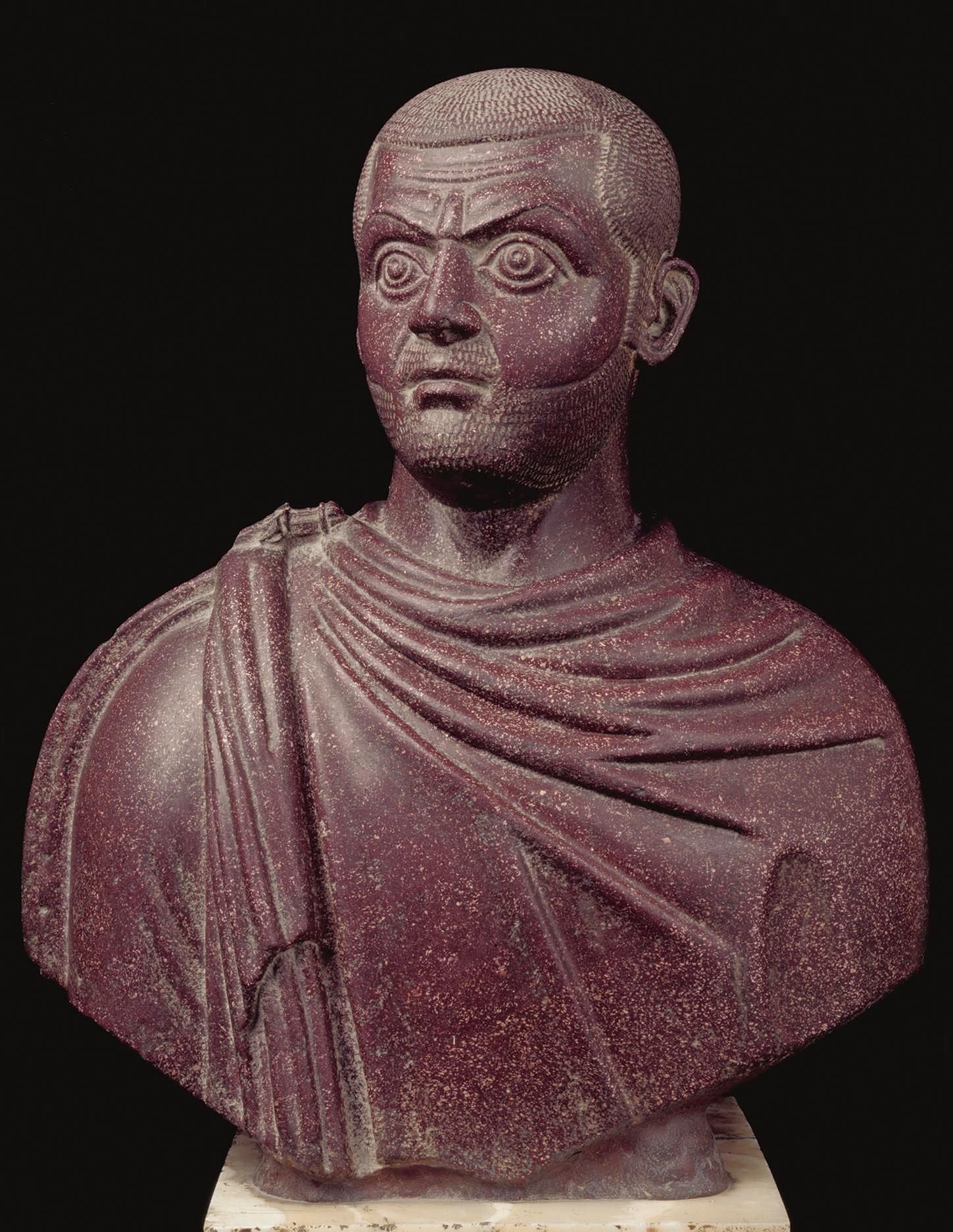
In 307 as well, Maximian in order to regain his position as Augustus considered allying with Constantine that he even married off his daughter Fausta to Constantine in Trier. The Roman Empire was thus in a state of confusion again wherein the west had 2 men claiming to be Augustus (Maximian and Maxentius) and one Caesar being Constantine, however Constantine did not care much about this as he was busy campaigning against the barbarians across the Rhine. In order to solve this situation in the west, Galerius in 308 had Diocletian come out of his retirement in Dalmatia and have a meeting in the military fortress of Carnuntum in today’s Austria with Galerius and Maximian. In this meeting, it was agreed that Maximian must once again retire, Constantine would remain as Caesar, and Maxentius was not to be recognized as anything which further enraged him. The east meanwhile stuck to the status quo with Galerius as Augustus and his nephew Maximinus as Caesar whereas a newcomer being Galerius’ close friend Licinius I (r. 308-324) was appointed as the new Augustus in the west.
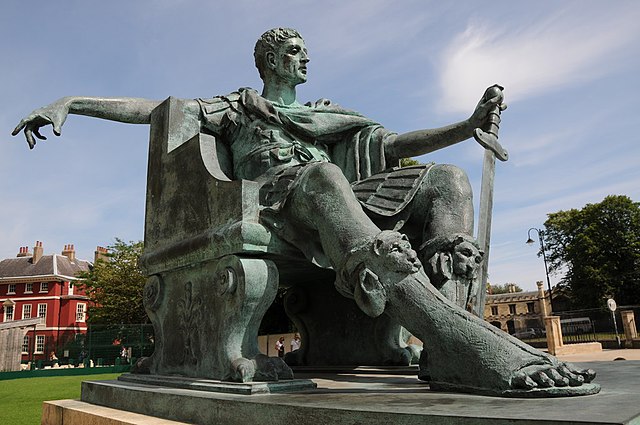
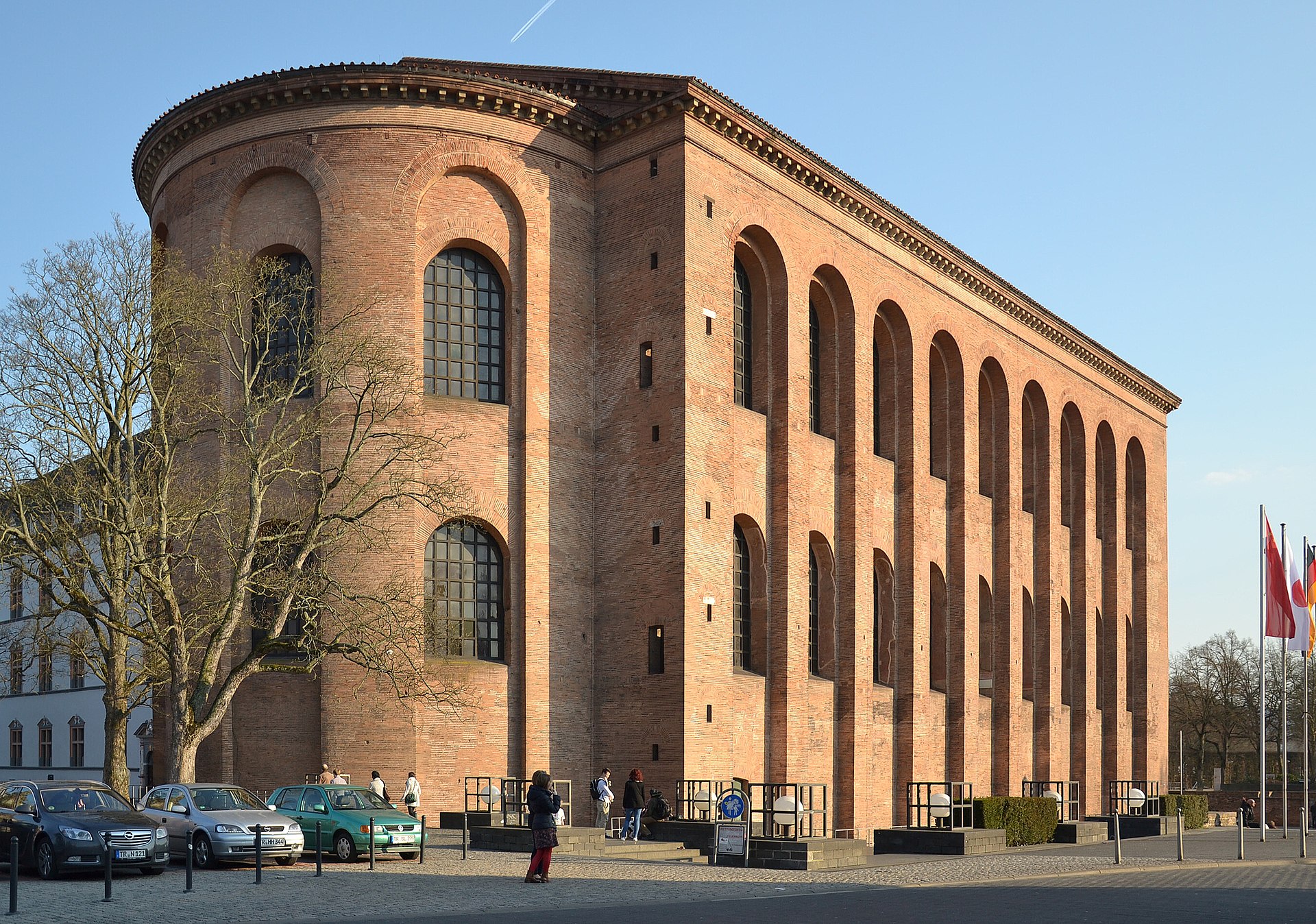
II. The Battle of Milvian Bridge

In 310, as Constantine was away campaigning against the Franks, his father-in-law Maximian once again usurped power in Gaul claiming that Constantine had died in campaign thus making a number of Constantine’s soldiers proclaim Maximian as emperor.

Constantine true enough who was still alive rushed south forcing Maximian to flee to Marseille wherein he held himself up until its garrison opened up the city to Constantine. Maximian was thus found and although he was spared by Constantine, he was encouraged to commit suicide by hanging himself later that year. Although Maximian’s son Maxentius was never in good terms with his father, he used his father’s death claiming it to be done by Constantine as a pretext to declare war on Constantine. In the meantime, in 311, the senior emperor Galerius died in Thessaloniki after declaring an end to the persecution of Christians whereas later that year it was Diocletian’s turn to die in retirement. With Galerius dead and the new Western Augustus Licinius preoccupied with problems in the east, Maxentius in Italy had his chance to rule alone without anyone getting in his way as Constantine too was busy campaigning again in Britain. Constantine however left Britain and prepared to march for Italy in early 312 whereas he too sealed an alliance with Licinius to preempt Maxentius making an alliance with Licinius, thus Constantine’s half-sister Constantia- daughter of Constantius I from his second marriage- was married to Licinius.
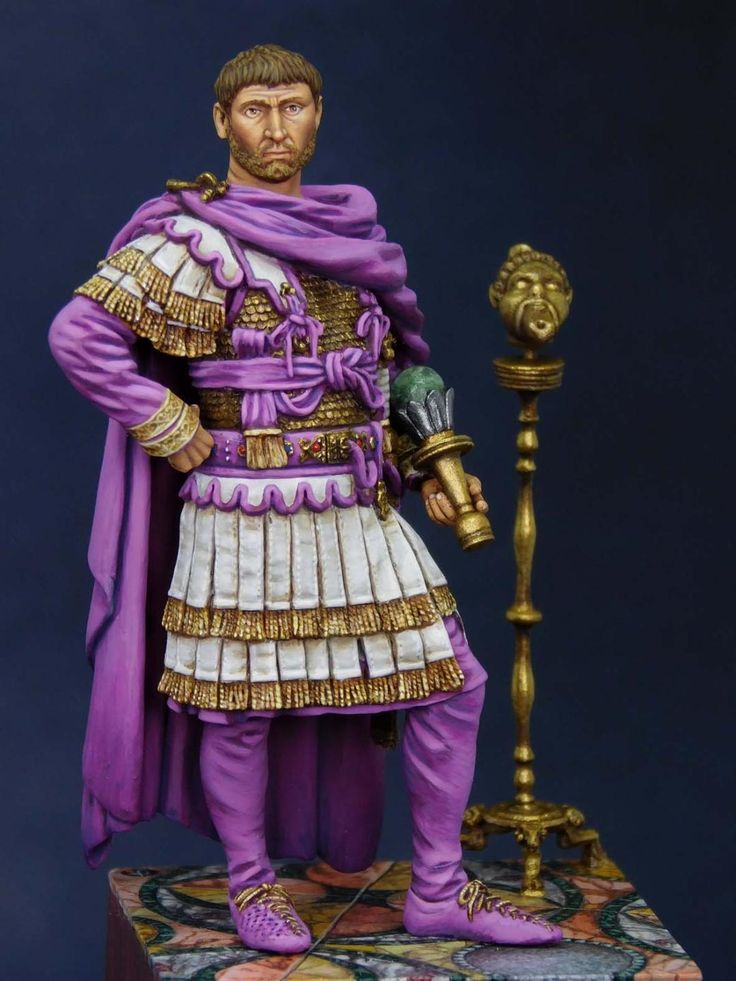
After crossing the Alps with his army, Constantine arrived in Italy ready to wage an open war against Maxentius’ troops wherein Constantine managed to successfully capture Turin, Milan, Brixia (Brescia), Verona, Aquileia, Modena, and Ravenna from Maxentius’ forces. Maxentius meanwhile believing he was still in a secure position despite these previous defeats- as he true enough had the Praetorian Guard still loyal to him and enough food supply in Rome- ordered that all the bridges across the Tiber River be cut off and one temporary bridge built in order to face off Constantine’s army. Maxentius too consulted the keeper of the Sibylline Books who gave him a prophecy saying that the “enemy of the Romans would die” which he believed to be Constantine. Meanwhile, Constantine on his way to Rome according to the historian Eusebius claimed to have seen a cross in the sky with the Latin inscription In Hoc Signo Vinces meaning “in this sign you will conquer” and later that night he had a dream wherein he was told that in order to defeat Maxentius he would have to paint the initials of Christ or the Chi (X) Rho (P) in Greek on all his soldiers’ shields. True enough in the following day, Maxentius’ soldiers were shocked seeing these symbols on the shields of Constantine’s soldiers that it was said that they lost focus allowing Constantine’s cavalry to crash on them and force them to retreat to the temporary wooden bridge Maxentius had built over the Tiber. As most of Maxentius’ army all crowded on the wooden bridge, their combined weight caused the bridge to fall and drown them in the river including Maxentius who too died drowning in the Tiber. Constantine thus entered Rome the next day victorious with the head of Maxentius paraded on a spear whereas the Roman Senate agreed to recognize Constantine as a legitimate Augustus.

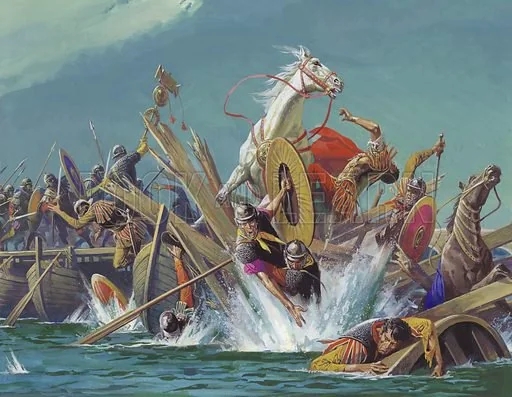
III. The Edict of Milan

Following Constantine’s victory over Maxentius at the Battle of Milvian Bridge in 312, Constantine began a propaganda campaign to damn the memory of Maxentius which included cancelling all his policies and renaming all structures Maxentius named after himself after Constantine all while Constantine too permanently disbanded the infamous Praetorian Guard due to their support for Maxentius.
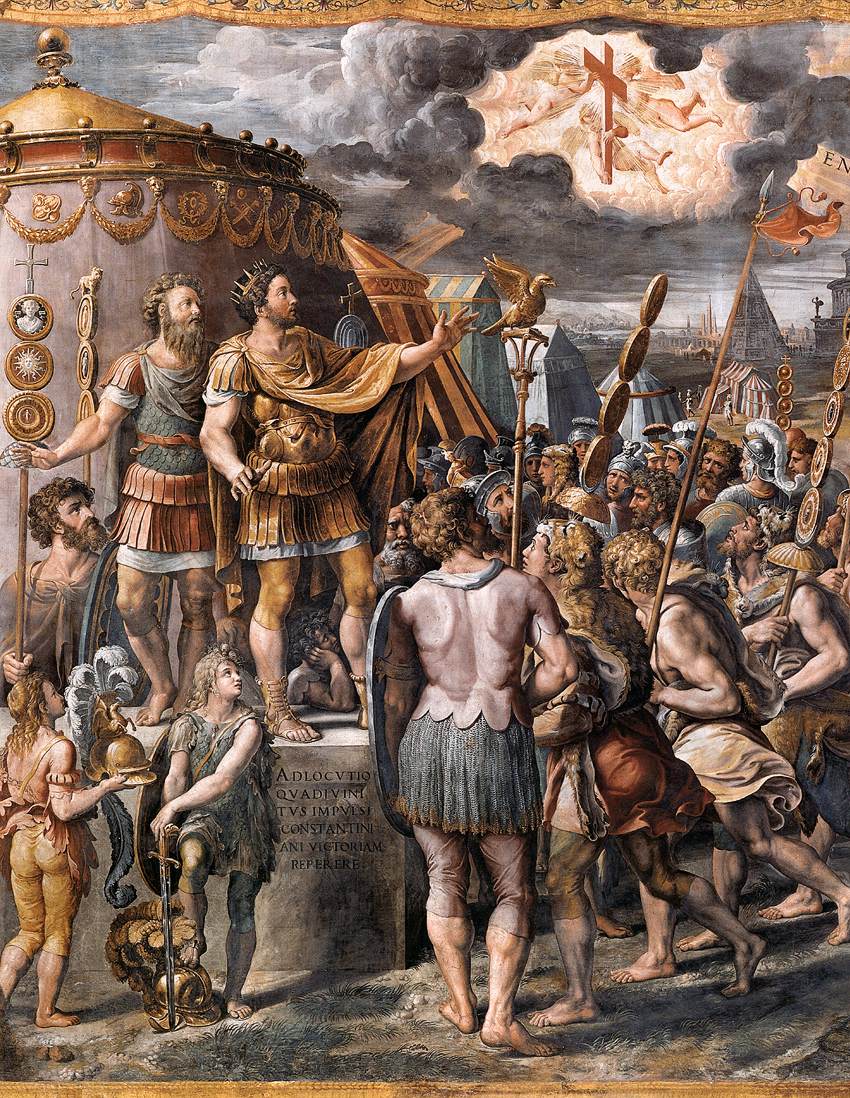
Additionally, Constantine believed that his victory over Maxentius was due to the Christian God who sent him the said vision and dream in the first place, thus Constantine began pursuing a policy of minting coins with the “Chi-rho” symbol on it as well as putting it on his Labarum or military standard. After celebrating his triumph in Rome and staying there for a few months, Constantine travelled north to Milan to formally seal his alliance with his Western co-Augustus Licinius and it was here where Licinius and Constantine’s half-sister Constantia were married. Aside from the marriage, it was in Milan in February of 313 wherein both Constantine and Licinius issued what is famously known as the “Edict of Milan”. This edict issued by both co-emperors therefore granted full tolerance to Christianity and all religions in the Roman Empire, therefore ending the persecution of Christians issued by Diocletian and previous emperors and making Christianity now legal empire wide.
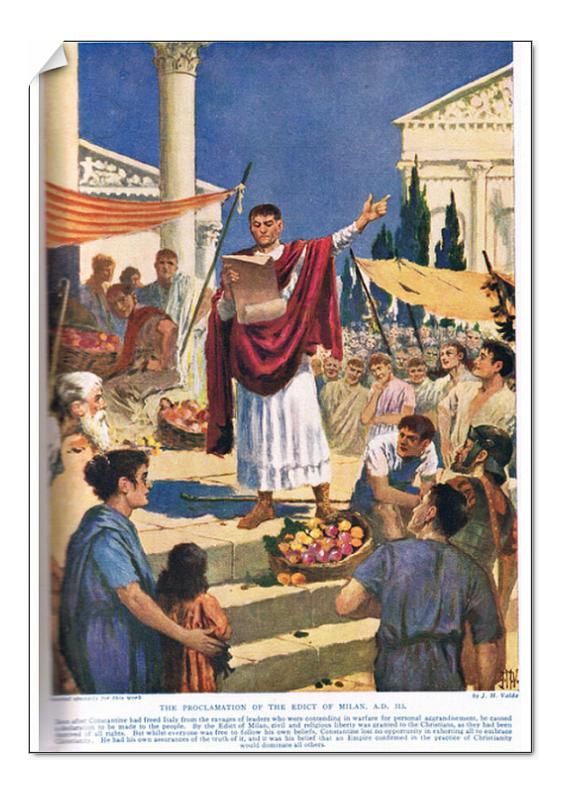
The Edict of Milan additionally granted Christians restoration for all property seized from them during Diocletian’s persecution. Although this edict was to benefit Christianity a lot, it was also meant to allow all religions in the empire to be practiced freely without the fear of being persecuted, though at the same time the edict also allowed Christians who were allowed to practice their religion freely to have their own versions of it- which shall be discussed later. The meeting between Constantine and Licinius in Milan however was brief as Licinius soon got word that the Eastern Augustus Maximinus Daza invaded Licinius’ territory in Europe. Licinius although eventually defeated Maximinus who later died in 313 as well thus giving Licinius full control of the eastern provinces but eventually, he would renege on the Edict of Milan he agreed to with Constantine thus leading to conflict to break out between both emperors some years later.

IV. Constantine’s Monetary Reforms

Aside from his victories in battle, Constantine the Great’s legacies too included economic reforms, notably reforming Roman currency and fixing the inflation that defined the Roman Empire’s economy in the 3rd century. Diocletian meanwhile too attempted to fix inflation by reintroducing the minting of silver coins which included the silver-bronze billon coin which still did not solve the inflation problem, though even in Constantine’s reign the billon still continued to be used.
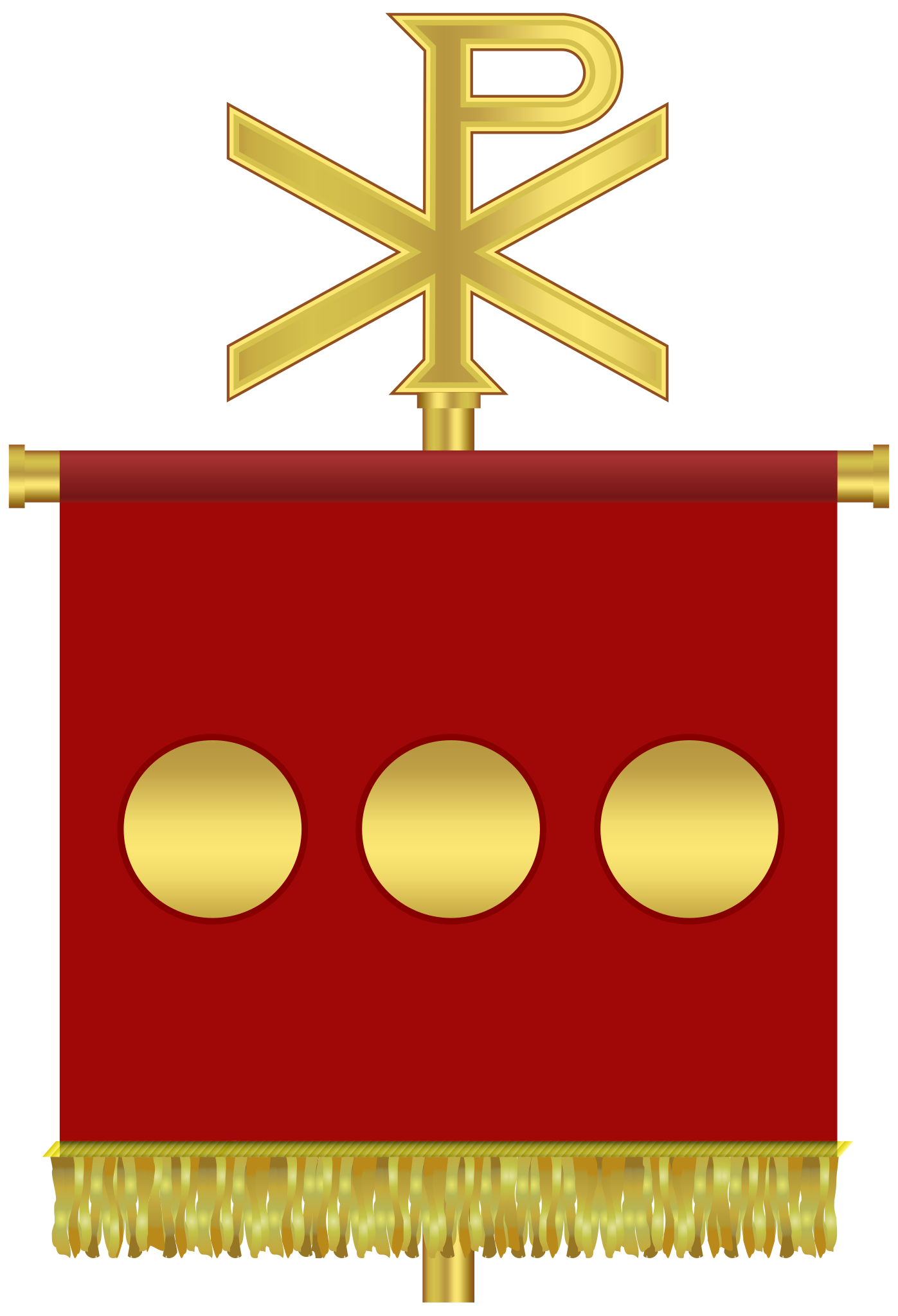
As emperor, Constantine I did not bother anymore to reform Diocletian’s silver currency, rather although the year is unknown, Constantine instead issued a new gold coin known as the Solidus which was much lighter in weight compared to the old Aureus gold coin. Constantine too in his later years was known to have had several gold, silver, and bronze statues melted across the empire to be minted into coins in order to fill the imperial treasury, though this was also part of his new religious policies that favored Christianity and looked down on the old Pagan faith. Constantine additionally, as mentioned earlier, minted Christian symbols on his coins such as the “chi-rho” as his way of promoting his new favored religion. The solidus coin meanwhile issued by Constantine I would turn out to last as the standard gold currency of the Roman (Byzantine Empire) for the next 7 centuries wherein it only devalued in terms of its gold content in 11th century Byzantium. On the negative side though, Constantine was known to have issued harsh tax policies including the introduction of the Chrysargyron or tax to be paid in both gold and silver by traders in the empire every 5 years which made him unpopular too.
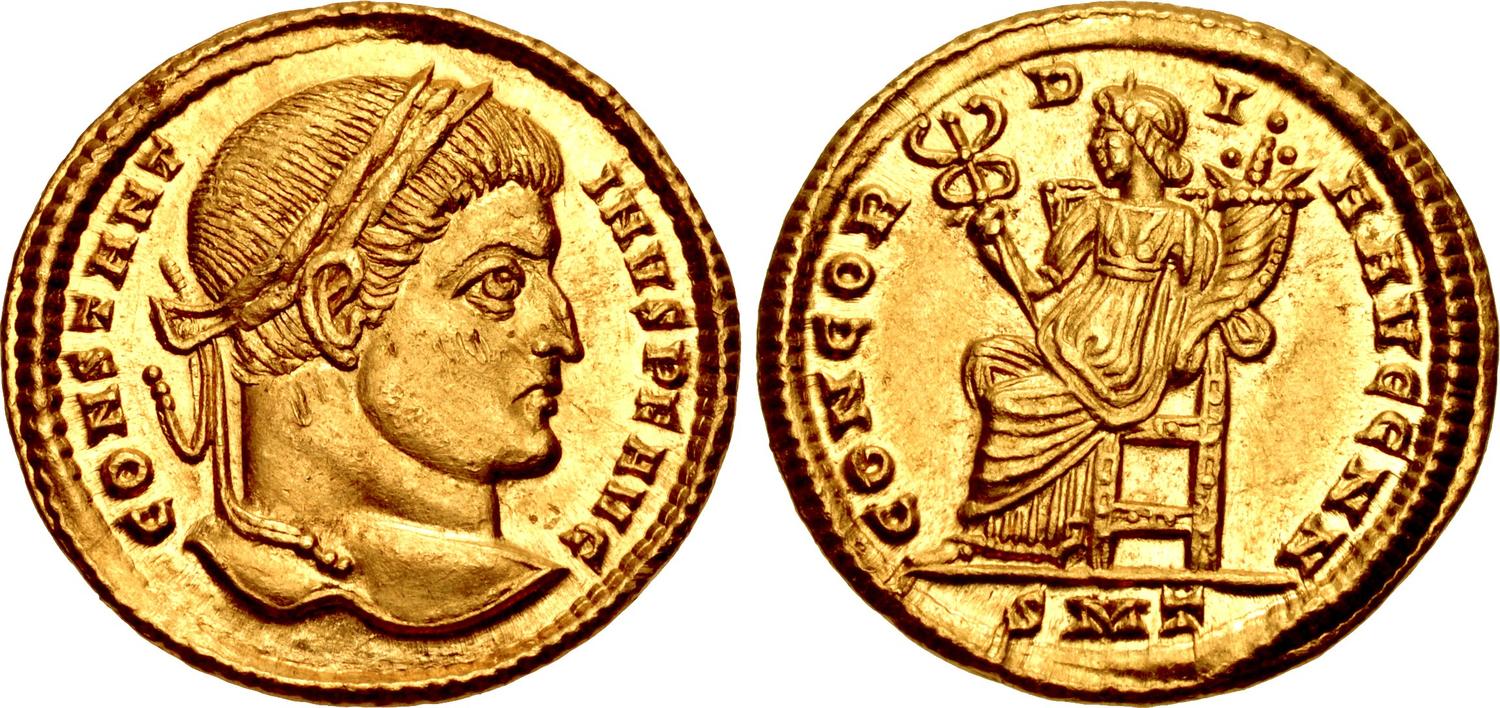
V. Constantine’s Administrative and Military Reforms

Just as he reformed the Roman Empire’s currency and issued laws regarding the Christian faith, Constantine the Great too had a number of reforms regarding the Roman state and its society. First of all, Constantine in 326 reversed the pro-equestrian class trend of the past by restoring positions in the Roman Senate to the old aristocracy, though he also made it possible for one to be elected as a senator by being elected to the position of Praetor.

However, in this process, Constantine had also removed a lot of power that the senate once had in order to project the power of the emperor and the army. As part of projecting the emperor’s power, Constantine too continued Diocletian’s practice of the emperor wearing a jeweled crown known as a diadem. When it came to the military, Constantine was most famous for once and for all disbanding the infamous Praetorian Guard that was known to have installed and betrayed emperors in the past centuries and it was due to the Praetorians supporting his rival Maxentius why Constantine put an end to them. To replace the Praetorian Guard as the elite bodyguard unit of the emperor, Constantine created a new army unit known as the Scholae Palatinae in which its members were recruited from among the barbarian tribes subdued by the Romans which thus included Franks and Alemanni serving in the west and Goths in the east. Aside from disbanding the Praetorian Guard and creating the Palatini to replace it, Constantine too continued his predecessor Diocletian’s military reforms which divided the Roman army into two parts, one being the mobile field armies replacing the old legions known as the Comitatenses and the border guard army known as the Limitanei all while two new officer positions were introduced being the Magister Peditum or “Master of the Infantry” and Magister Equitum or “Master of the Cavalry”. This new system in the Roman army would thus be so successful that it would be in use for centuries.

VI. Civil War Victories over Licinius

As mentioned earlier, although both Constantine and Licinius agreed to allow Christians in the Roman Empire toleration through the Edict of Milan, both rulers would end up eventually falling out with each other.
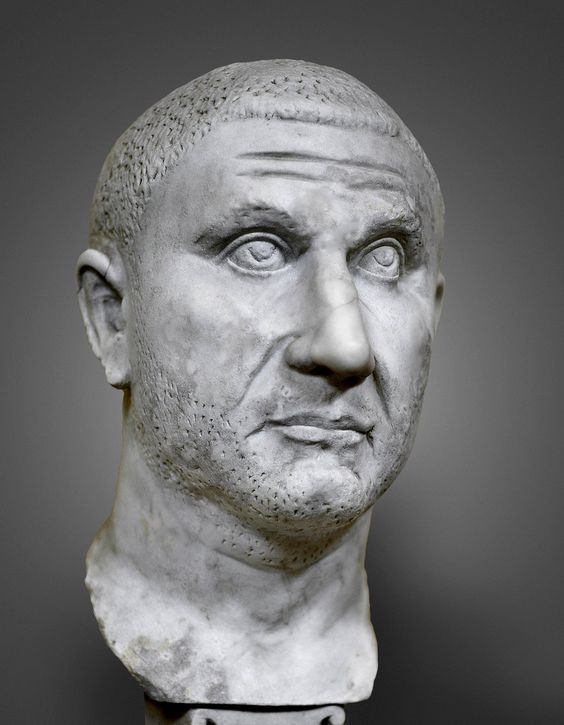
This was mainly due to Licinius reneging on this agreement by restarting the persecution of Christians in his part of the empire being the east and in allegedly masterminding a failed assassination attempt on Constantine. In 316, both factions of Constantine and Licinius went to war with each other clashing at the Battle of Cibalae in Pannonia (today’s Croatia) which ended with Constantine victorious. The two factions again battled each other in 317 at the Battle of Mardia in Thrace again ending with Constantine victorious, thus Constantine and Licinius reached an agreement wherein both Constantine and Licinius would still rule the empire as co-Augusti wherein both Constantine’s sons Crispus from his first marriage and Constantine II from his marriage with Fausta would rule as Caesars together with Licinius’ son Licinius II who was to be made an additional Caesar. With the conflict between Constantine and Licinius settled, Constantine basing himself in Sirmium (in today’s Serbia) resumed his campaign against the Goths across the Danube.

Licinius in the meantime despite settling peace with Constantine still reneged on the agreement as seen in 320 when he began oppressing Christians again, although this time pursuing a bloodless persecution wherein he instead fired Christians from government positions and confiscated their properties. Licinius’ anti-Christian policies thus led to Constantine once again declaring war on him and both factions thus clashed again in 324 at the Battle of Adrianople wherein Licinius was aided by Goth mercenaries and Constantine by subdued Franks. The battle here ended once again with a victory for Constantine allegedly due to the newly gained religious zeal of his soldiers whereas Licinius fled across the Bosporus and elevated his administrative officer Martinian as his co-Augustus. Despite having a fleet of 350 ships, Licinius was once again defeated at the naval Battle of the Hellespont by Constantine’s navy of only 200 ships commanded by Constantine’s son Crispus. The civil war eventually culminated in September of 324 at the Battle of Chrysopolis where the defeated Licinius and Martinian both surrendered to Constantine in exchange for being allowed to retire in Thessaloniki and Cappadocia respectively. Constantine however still did not trust Licinius and thus in 325, he accused Licinius of plotting against him and thus had him executed by hanging whereas in the following year (326) Constantine had Licinius’ son Licinius II killed. Overall, with Licinius eliminated in 324, Constantine thus assumed full control of the Roman Empire being its first sole ruler in 39 years.
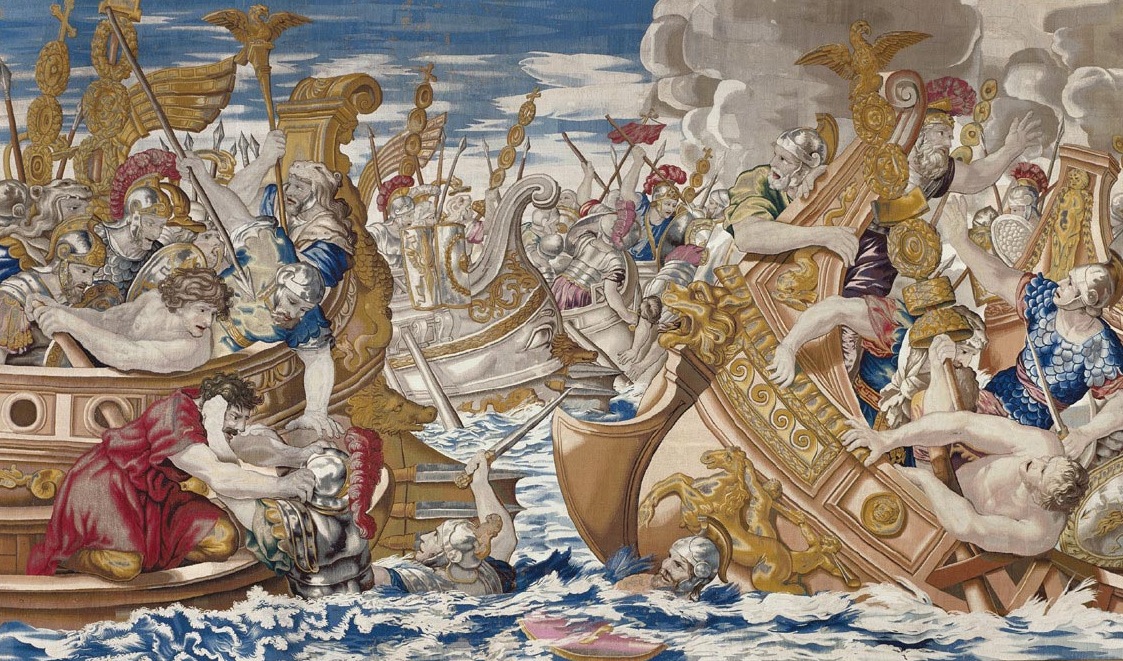
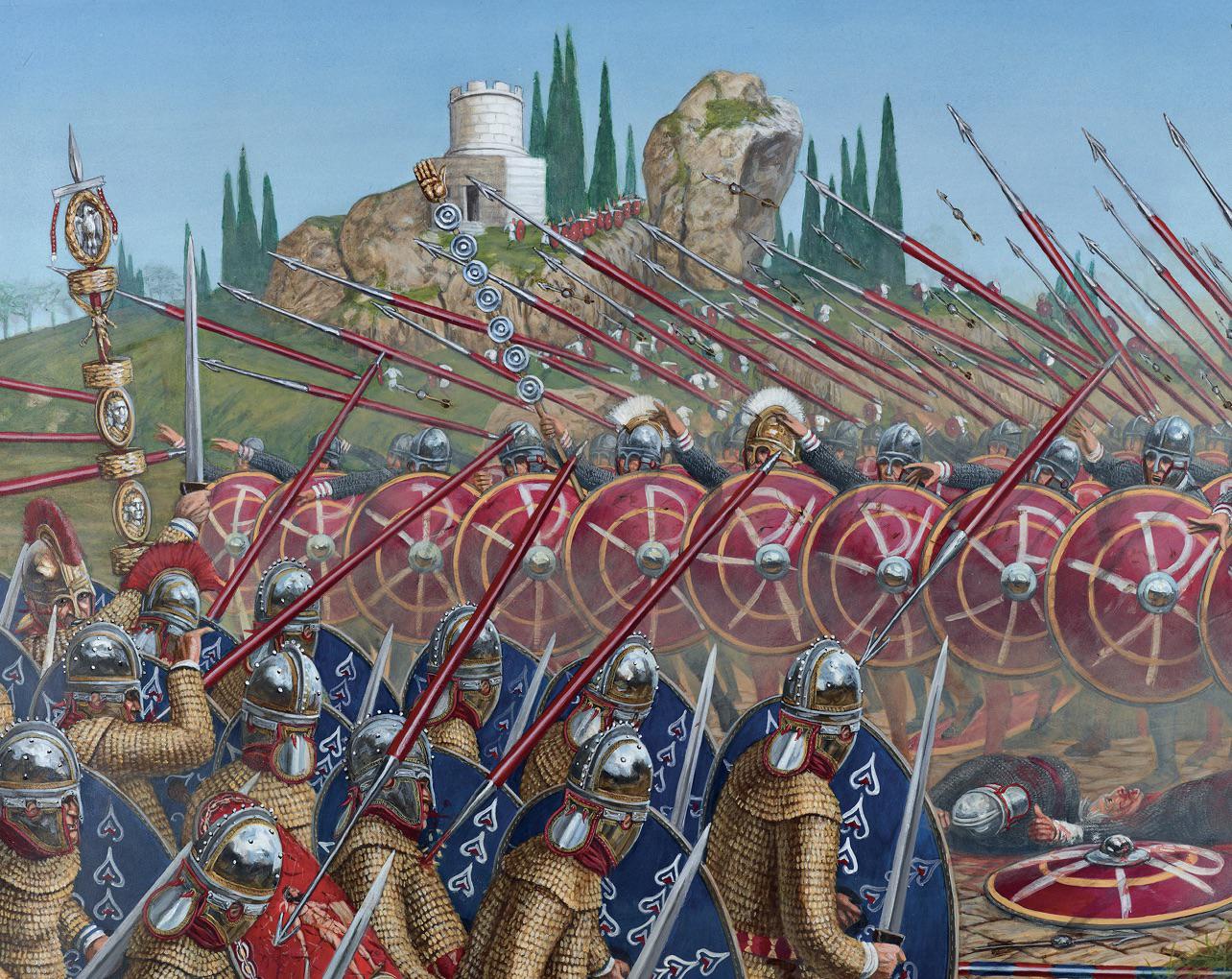
VII. The First Council of Nicaea and Promoting Christianity

Following Constantine’s victory over Maxentius in 312, Constantine had begun favoring the Christian faith more and more especially since he believed it brought him to victory, though he was also greatly influenced by his mother Helena who was a Christian yet Constantine ironically had not yet converted to the said faith.
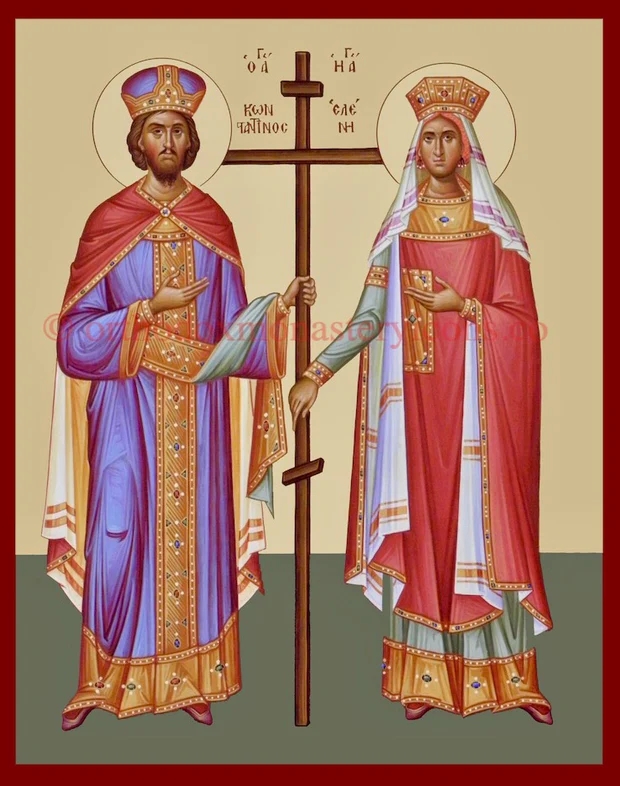
The Christian Church however in Constantine’s time was divided over beliefs as the orthodox belief here was that Christ was both divine and human but the popular belief of Arianism by the followers of the Egyptian priest Arius believed that Christ was only a creation of God and therefore just human. Due to the differences of beliefs concerning Christ’s natures, Constantine doing his part to unite Christianity as the religion he believed would unify the empire called for what would be an “ecumenical” meaning “world-wide” or rather “empire-wide” council in 325. The location Constantine chose for the council to be held in was the city of Nicaea in Bithynia in Northwest Asia Minor wherein he invited all bishops of the empire to attend.
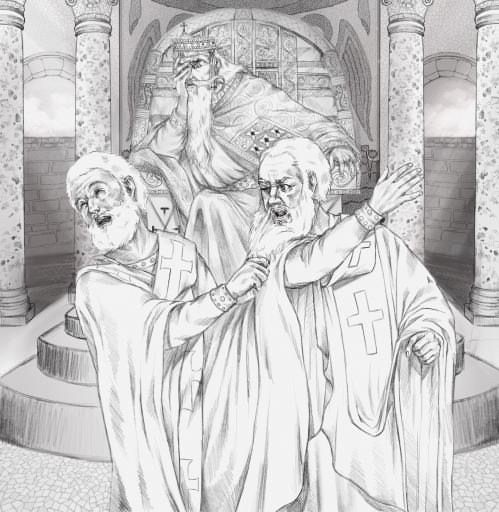
The notable Church leaders to attend the council included the heretic Arius himself and his followers such as the Bishop of Nicomedia Eusebius, the Bishop of Alexandria Alexander I and Alexandria’s future bishop Athanasius who both strongly opposed Arius and his teachings, the Bishop of Caesarea in Palestine also named Eusebius who was Constantine’s biographer, the Bishop of Myra St. Nicholas (better known as Santa Claus himself), Constantine’s advisor Hosius of Cordoba from Hispania, and even bishops from faraway lands such as Persia, Georgia, and the Gothic lands. During the meetings of what would be known as the First Ecumenical Council in Nicaea, arguments raged on and turned into fights wherein St. Nicholas was said to have assaulted Arius in the middle of an argument over the natures of Christ.

Although the council at the end formulated the official creed of Christianity known as the Nicene Creed, condemned Arianism as a heresy, and also set the date for Easter, the council still did not solve the problem of the Arian heresy which thus continued to exist even after 325. Despite Constantine failing to fully unite the Christian Church under one belief, he was able to promote the Christian faith through other means as was seen with his construction projects of magnificent Christian churches such as the pope’s basilica and the first version of St. Peter’s Basilica in Rome. Additionally, Constantine’s mother Helena who he named as his empress or Augusta as well being the more devout Christian took a pilgrimage to the Holy Land in 326 to visit the sites in the life of Christ and she true enough with the blessings of her son constructed several churches there. In the Holy Land, Helena was most famous for discovering the True Cross and on the site of its discovery, Constantine ordered the construction of what would be the Church of the Holy Sepulcher.
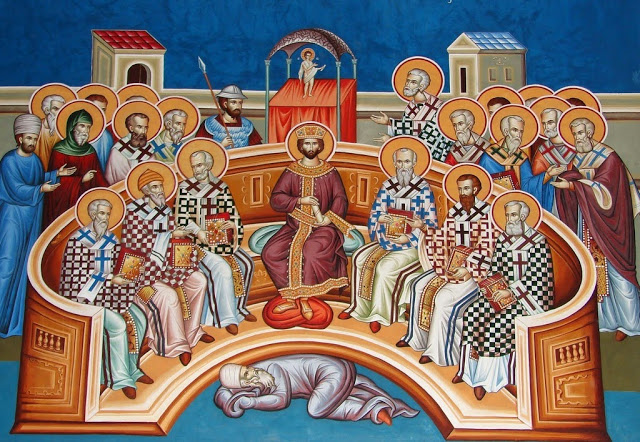
VIII. The Founding of Constantinople

Apart from his role in shaping Christianity into a major world religion, Constantine the Great’s other greatest legacy was in giving the Roman Empire a new capital that would last as one for over a thousand years and this city would be Constantinople.
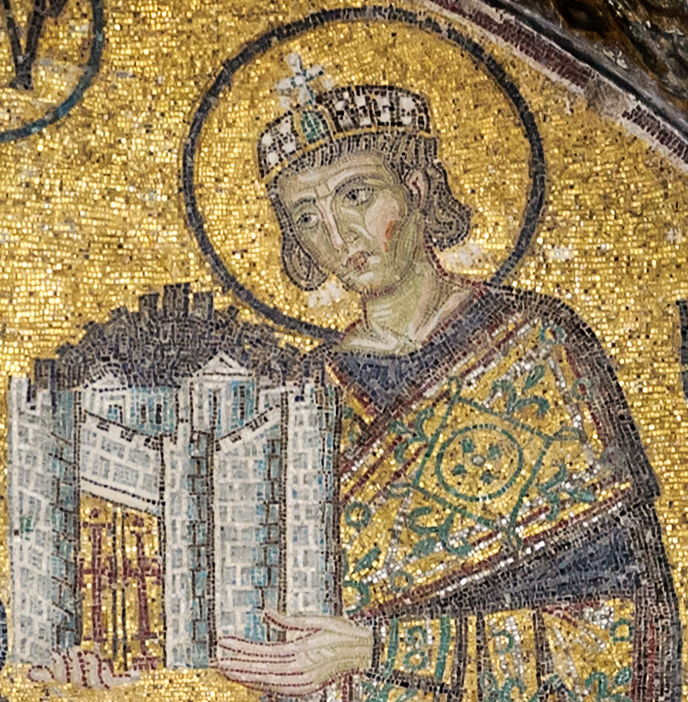
The site Constantine chose for his new capital was the city of Byzantium, originally founded back in the 7th century BC as an Ancient Greek port colony which true enough was in such a strategic position wherein it could control trade between the Black Sea and Mediterranean considering that its position was in the Bosporus being the only passageway between both seas. Additionally, Byzantium was also in a strategic position as it was close to the empire’s two frontiers being the eastern border with the Sassanid Empire and north being the Danube thus giving the emperor an easier time to defend both critical borders. Additionally, it was also in Chrysopolis which was just right across the Bosporus from Byzantium where Constantine finally defeated Licinius in 324, thus seeing the city across Chrysopolis possibly also gave Constantine a reason to build the empire’s new capital there.
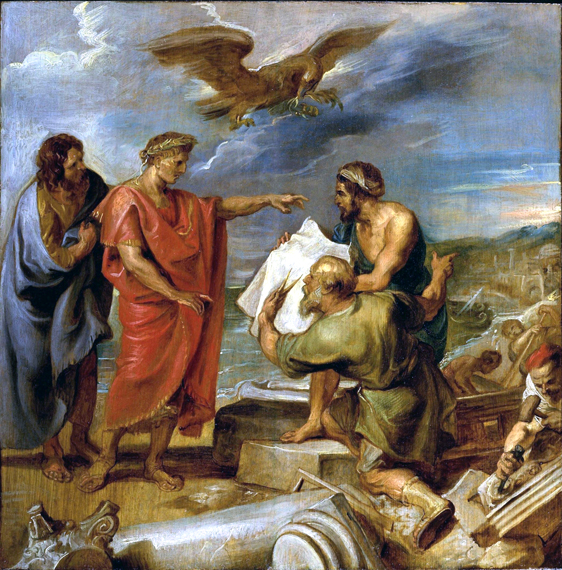
Constantine’s main reason now to move the capital east was mainly because he saw the east to be richer and more populous compared to the depopulated west where Rome was and although given other options to relocate the Roman capital to such as Serdica (today’s Sofia, Bulgaria), Sirmium, Thessaloniki, and even Diocletian’s old capital of Nicomedia, he chose Byzantium which too was near Nicomedia. However, when Constantine chose Byzantium to be the new capital in 324, it was not a large city yet, though in only 6 years from 324-330, Constantine managed to expand the city 3 times its original size and decorate it well enough to the point of it being worthy of an imperial capital.

Among the many new structures Constantine added to Byzantium in order to make it an imperial capital included the first structure for the great palace, the expansion of the city’s Hippodrome, a main passageway known as the Mese, several churches such as the main cathedral then being the Hagia Eirene, a forum named after him featuring a tall porphyry column at its center with his statue above as the sun god Apollo known as the Column of Constantine, and a wall to defend the west side of the city which was not surrounded by sea. In order to decorate his new capital, Constantine had raw materials brought from all parts of the empire to Byzantium while also looting many ancient sites across the empire such as Pagan temples for pieces. To put it short, the process of turning Byzantium into an imperial capital was so impressive and in 330, the city was dedicated and was thus known as Nova Roma or “New Rome”, though generations after Constantine’s time would call the city as Constantinople or “Constantine’s city”. An additional thing Constantine had built in the city from scratch was the Church of the Holy Apostles which he intended to be his resting place but also to house the relics of all 12 Apostles with Constantine being the 13th of them.
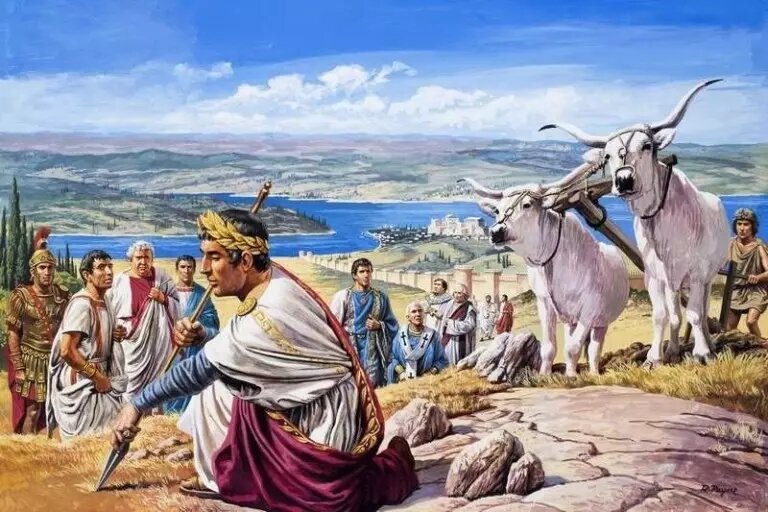
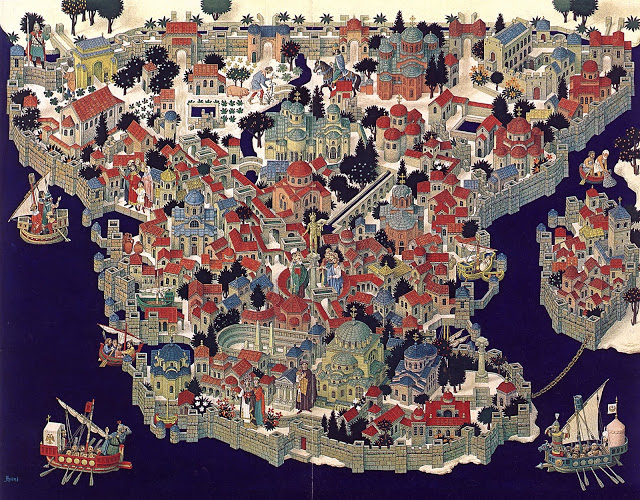
IX. Wars Against the Franks, Goths, and Sassanids

Aside from being successful in civil wars against rival emperors in the Roman Empire, Constantine was also greatly successful in foreign wars against Rome’s external enemies. Early in his reign following his first proclamation as emperor in 306, Constantine being based in Trier already immediately campaigned against the Franks across the Rhine from Gaul in which he was successful.

Constantine only abandoned his campaign against the Franks in 310 when his father-in-law Maximian rebelled against him, though following this Constantine left the job to his generals to take care of the Franks as he proceeded east. During the time Constantine was in conflict with Licinius during the 320s, he too focused his attention to battle the Goths and Sarmatians beyond the Danube as in 322, the Sarmatians under their king Rausimond invaded the Roman Balkans. Constantine’s response however was swift and in 323 he crossed the Danube invading Gothic and Sarmatian territory wherein Rausimond himself was killed in battle. In 328 meanwhile as Constantinople was being constructed, Constantine continued his campaigns against the Goths wherein here he constructed his bridge across the Danube as his intention was to reconquer Dacia, the Roman province in today’s Romania abandoned in the 3rd century by the emperor Aurelian and thus overrun by the Goths.
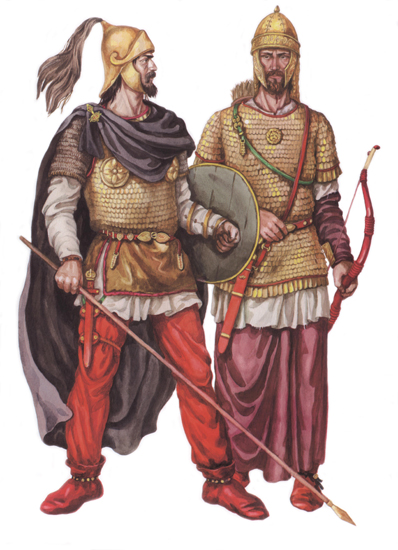
In 332, Constantine then allying with the Sarmatians marched his armies into Gothic territory to the point of forcing the Goths to submit to Rome due to running out of food supply as a result of the harsh winter. Eventually, Constantine decided to turn on his Sarmatian allies in 334 when they overthrew their leaders, and again Constantine was victorious thus annexing some of Sarmatian land beyond the Danube and resettling the defeated Sarmatians in Roman Illyria as farmers. By 336, Constantine was able to reconquer the southern part of Dacia from the Goths and Sarmatians but at the same time he too would be preoccupied with problems in the east. Now in around 335, the Sassanid Persian king or shah Shapur II (r. 309-379) after consolidating his power began raiding Roman territory in the east, thus Constantine sent his second son with Fausta Constantius to guard the eastern frontier.
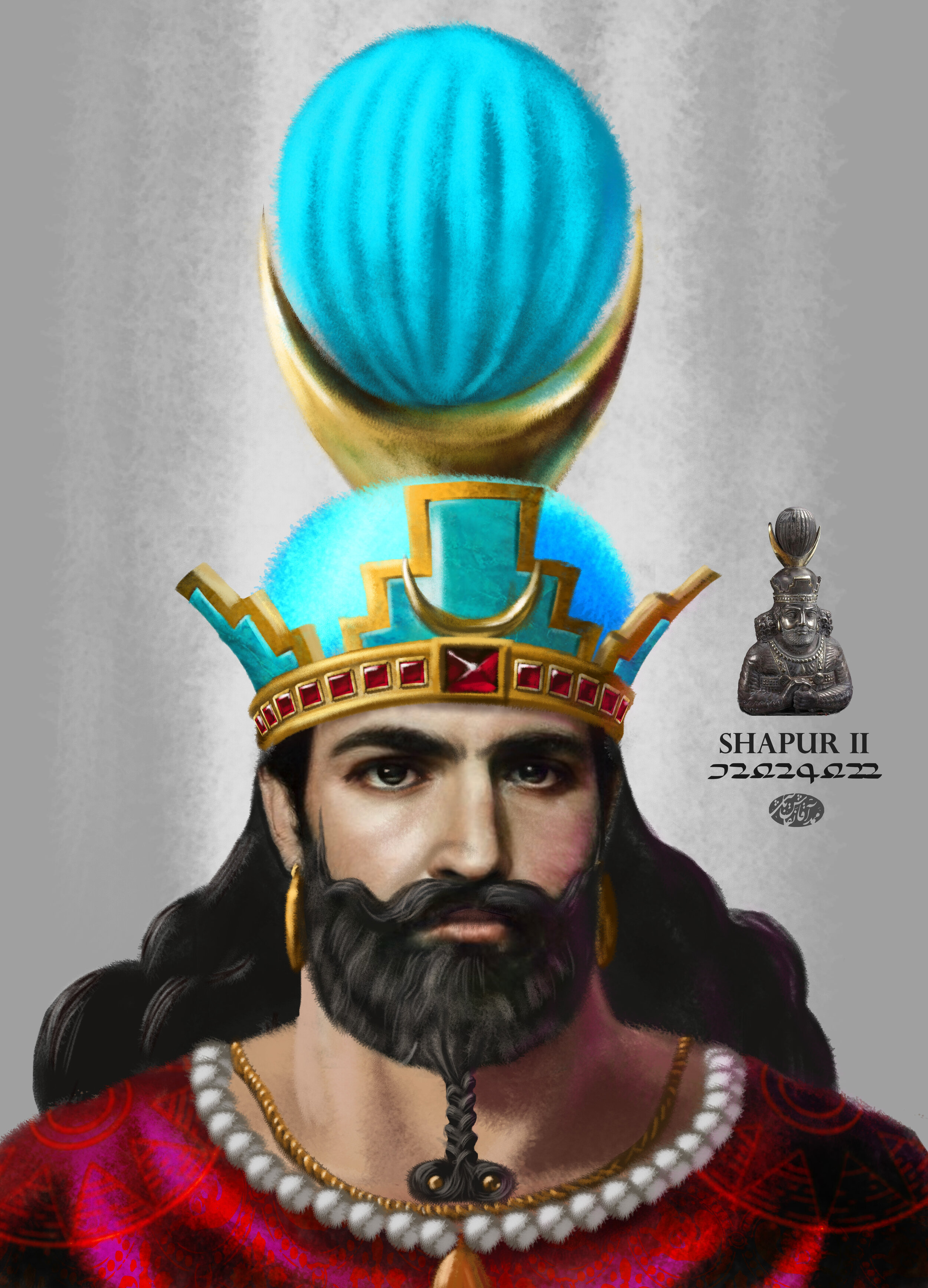
At the same time too, Constantine wrote a letter to Shapur wherein Constantine asserted his role as the protector of Christians telling Shapur to treat his Christian subjects well or else face war. Shapur II however was only insulted by Constantine’s letter and so in 336 he sent an army to invade Armenia- a Roman client kingdom and a Christian state since 301- which ended in success wherein Shapur placed a Persian client on the Armenian throne. In response to this, Constantine prepared for war naming his nephew Hannibalianus as “King of Kings of the Pontic People” both as an insult to the “King of Kings” Shapur II but also to give off the Pontic lands in Asia Minor to Hannibalianus. The Persian campaign however never happened due to Constantine’s sudden illness in 337.

X. Death and Succession

In 337 in the midst of planning his campaign against the Sassanid Persian Empire, Constantine suddenly fell ill wherein he knew that his death would come soon, thus he prepared his own resting place at the Church of the Holy Apostles in Constantinople which he recently finished. Due to his illness, Constantine left Constantinople for the hot springs near Nicomedia to heal, and there when realizing that he would die anytime soon announced that he wished to be finally baptized as a Christian in the River Jordan.
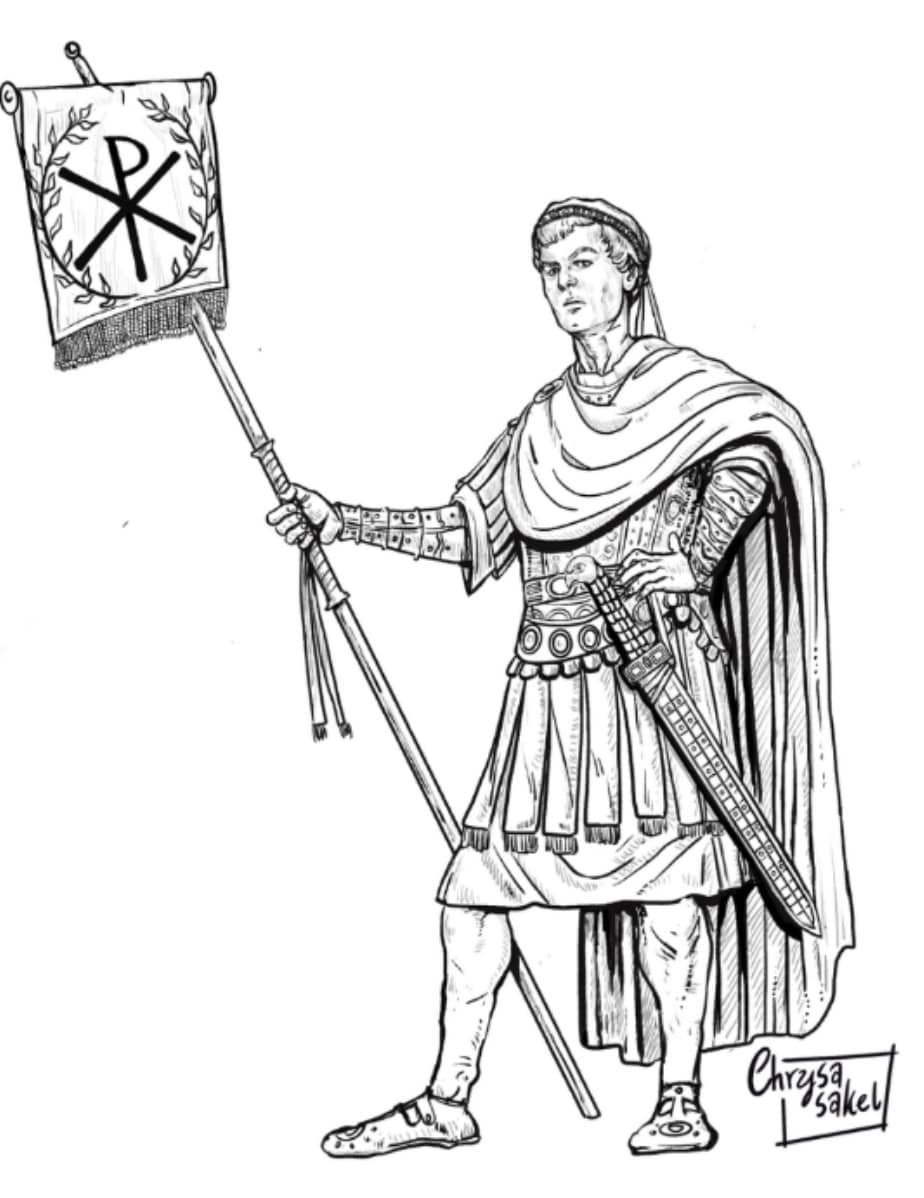
Constantine however never made it as far as the River Jordan, instead he was baptized in Nicomedia where he ironically chose its Arian bishop Eusebius to baptize him, which means to say that if Constantine were baptized, he was therefore baptized into the Arian sect of Christianity. Shortly after his baptism, Constantine died on May 22 of 337 at the age of 65. Now before his death, the one thing Constantine had to work on was his succession as true enough by the time he died his eldest son Crispus from his first marriage had already died apparently by being executed in 326 under his father’s orders. Now back in 326, Constantine’s second wife Fausta accused her stepson Crispus- who she was jealous of- of trying to assault her. Constantine thus fell for his wife’s accusation and immediately had Crispus put to death, however Constantine soon discovered the truth from his mother Helena- who died in 330- that Crispus was innocent, and thus out of rage on his wife, Constantine thus had Fausta executed by locking her up in an overheated bath wherein she suffocated to death. With Crispus gone, the succession for the empire was now in the hands of Constantine’s 3 sons with Fausta: Constantine II (r. 337-340), Constantius II (r. 337-361), and Constans I (r. 337-350).
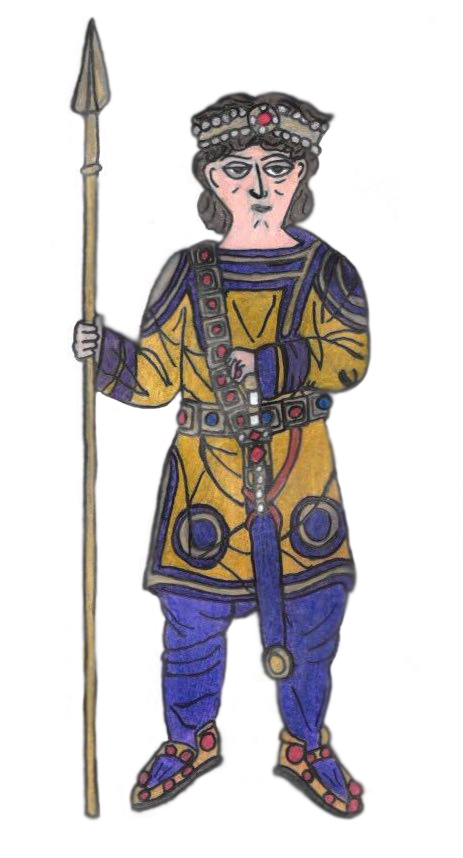
Before his death, Constantine despite having reunited the Roman Empire agreed to split it among his 3 sons wherein the eldest being Constantine II was to take the western provinces including Britain, Gaul, and Hispania; the middle son Constantius II was to take the eastern provinces ruling from Constantinople; and the youngest son Constans I was to take the middle provinces including Italy, Pannonia, Illyria, and most of North Africa. Additionally, Constantine appointed his nephews Dalmatius and Hannibalianus as additional successors wherein Dalmatius would rule Greece and some of the Balkans while Hannibalianus would be King of Pontus in Northern Asia Minor. Although Constantine was mostly successful in his life and reign, his succession plan would end in failure. Following Constantine’s death, his middle son Constantius rushed back from the Persian border to Constantinople and together with his 2 brothers ordered the murders of his uncles and cousins to avoid a potential power struggle, thus both Dalmatius and Hannibalianus were killed as well and their lands respectively turned over to Constans and Constantius. The 3 brothers were thus all acclaimed as co-Augusti but mistrust eventually broke out between them as in 340, Constantine II invaded Constans’ Italy and was killed by Constans’ troops while in 350 Constans himself was killed by his own troops. Constantius II would thus be the senior Augustus of the Roman Empire although appointing his surviving cousins as his Caesars first being Gallus (r. 351-354) who was later executed under Constantius’ orders and then Gallus’ half-brother Julian (r. 355-361) who eventually rebelled against Constantius who although died in 361. With Constantius II dead, Julian would once more rule a united Roman Empire as Augustus (361-363), but he too would die in 363 in battle against the Sassanid Persians thus once and for all ending the Constantinian Dynasty.
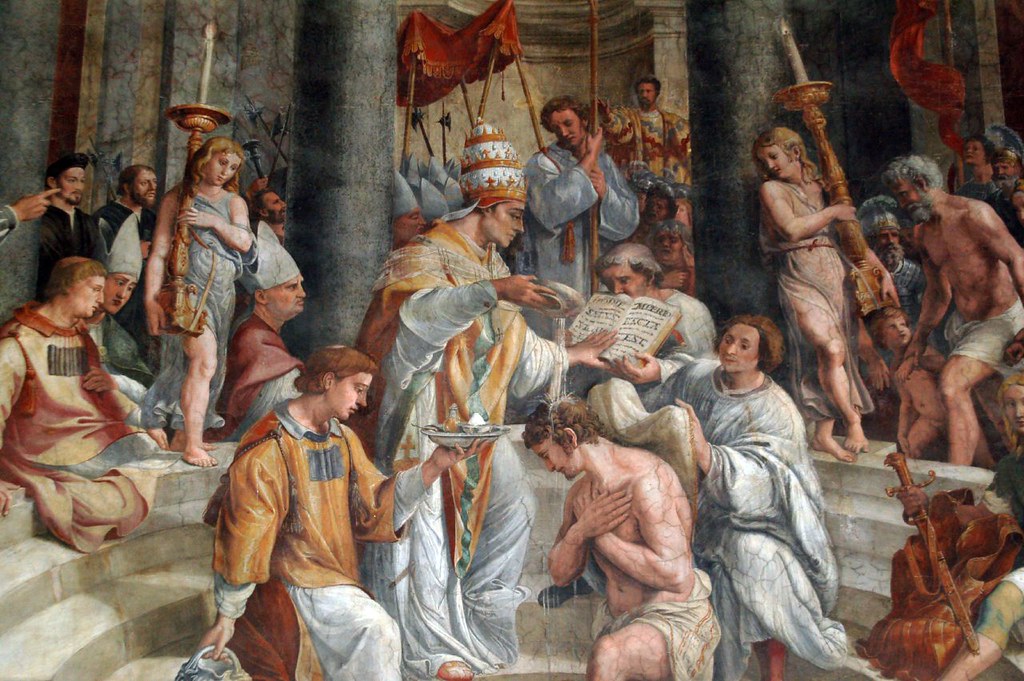

Conclusion

Despite being known as “the Great”, Constantine I although having many achievements was far from the perfect example of a ruler as not only did he execute his own wife and son and many of his relatives in the name of power, his succession plan ended in failure wherein his sons fought each other and further tore the Roman Empire that Constantine reunited apart once again in civil wars.

Despite having so many achievements in his reign, Constantine the Great had two major failures one being his inability to solve the Arian heresy despite calling for the Council of Nicaea in 325 and the other being his failed succession plan that only further divided the Roman Empire he worked so hard to reunite. Although he had some failures, Constantine can surely deserve his title of “the great” as for one he was never defeated in battle, he reunited the Roman Empire torn apart by civil war, he turned Christianity from a persecuted faith to a major world religion in such a short amount of time, and lastly, he established a new capital that would last for over a thousand years. Among his many achievements, Constantine’s role in shaping Christianity into a major world religion through his Edict of Milan and the Council of Nicaea is surely a legacy that can still be seen today considering that Christianity no matter what sect of it is a dominant religion across the world, thus this makes him be considered an Orthodox Christian saint too. Second of all, Constantine’s other greatest legacy can be seen with the establishment of Constantinople as the Roman Empire’s new capital as this gave birth to what would be the Eastern Roman or Byzantine Empire that would last for over a thousand years and thus, we have Constantine to thank for bringing it into existence. Although having some failures, Constantine due to the legacy he has left behind does true enough deserve the title of “the great”. Now, what are your thoughts on Constantine the Great and do you really think he deserves the title of “the Great”? I would like to thank you all for reading this article and please continue to support me by following and subscribing to my sites!
